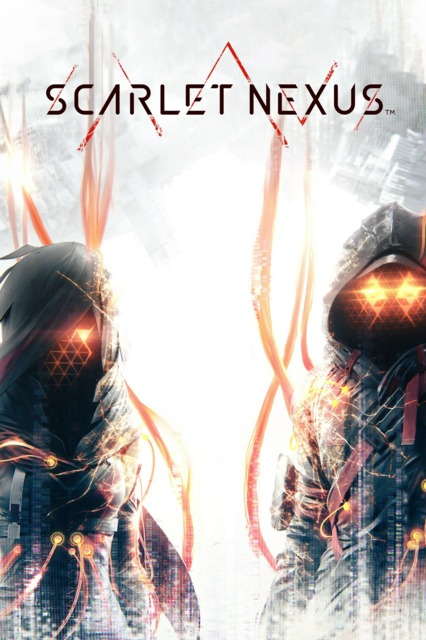
In a bid to finally join everyone in the present, I've finally embarked on my first playthrough of a 2021 game. Yaaay! Scarlet Nexus is the other big RPG to launch from Bandai Namco this year, some months before the seventeenth entry in their long running Tales franchise Tales of Arise (that's a "stay tuned"), and it immediately creates a strong impression with its psychokinetic action and uncommon, anime-fied take on the post-apocalypse. After most of humanity is wiped out by an unknown psychic phenomenon and a horde of bizarre creatures that conventional weaponry is ill-suited to counter, humans with psionic abilities are found and trained to combat this new threat. The OSF - the Other (as these creatures are known) Suppression Force - then becomes humanity's one and only barrier against this encroaching menace. The player, as one of two protagonists, is an OSF recruit capable of throwing objects and enemies around like they were lighter than air; fellow soldiers in the party adopt similar psionic skills, such as pyrokinesis, teleportation, clairvoyance, and so on.
As soon as the game started I was subconsciously hunting for Tales comparisons, but to Scarlet Nexus's credit even if a lot of the groundwork is similar - especially in how it emphasizes character-to-character interactions during the game's regular "standby" downtimes - the game feels markedly different to play. The combat system in Scarlet Nexus superficially similar to Remedy's Control with its use of various psychic powers on cooldowns to support conventional attacks, but with several more layers of complexity on top and one hell of a difficulty curve. If I were to liken these two games to those from the fighter genre, Control would be something like Mortal Kombat - simple to pick up, though with enough nuance that it would take some dedication to master the game - whereas Scarlet Nexus is closer to an Arc System Works joint like Guilty Gear or BlazBlue, in that the complexity and challenge level start prohibitively high and it demands a bit more of a commitment before you're likely to get anywhere with it. This isn't necessarily a bad thing, and Scarlet Nexus has more than a few shades of a character action game like Devil May Cry or Bayonetta where a second playthrough might prove more compelling than the first with the knowledge and experience you've since acquired. The game is actually designed to benefit from this arrangement, as it has two protagonists with distinct story paths, combat roles, and differing perspectives on the same events which adds useful context you'd miss by seeing one route alone.
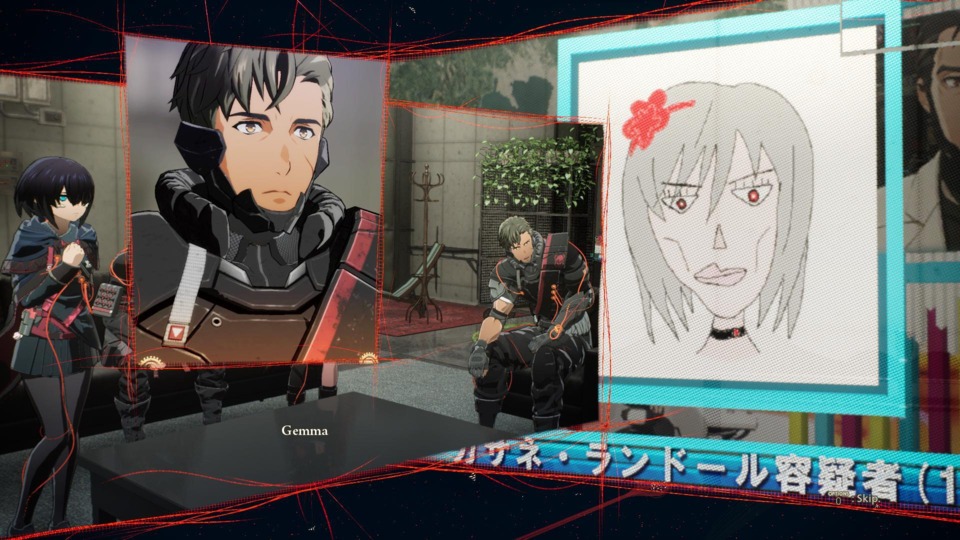
A typical combat encounter in Scarlet Nexus would involve sizing up the opponents, recalling what kind of psionic skills work best on them, and then start softening them up with the game's standard combo of using a few regular attacks (the male protagonist, Yuito, uses a close-range katana while the female protagonist, Kasane, has a bit more of a range to her throwing knives) followed by psychically clubbing the enemy with a nearby piece of detritus, the former generating the juice needed to pull off the latter. There's also a deluge of additional mechanics that you're meant to take somewhat in stride as the game gradually doles them out, though you might not need to exploit them all in full unless you're on the higher difficulty setting. A lot of these mechanics are conditional: your "SAS" (trust me, like most JRPG acronyms, it makes even less sense when spelled out) links with your companions, for instance, allow you to temporarily adopt their powers each of which is specialized against certain types of opponent. For instance, there's a quick movement guy who helps with flying enemies that flit out of your melee range, an elemental type that provides a flat damage bonus and can trigger status effects in those susceptible to them, the power of clairvoyance allows you to see stealthed enemies and improve the window on your perfect dodge rolls (similar to the Flash Moves/Guards of Ys VIII), and invisibility to give yourself an opportunity to initiate battles from an ideal position or skip them entirely. It's usually obvious enough when these ally powers are most applicable, though battles are chaotic enough that these synergistic opportunities are easily missed. Then there's the more mercurial Brain Drive and Brain Field modes, both of which can be improved further on the Brain Map (this game sure loves that word), which feel a little too risky to be reliable: the former activates when a gauge is filled, though there's little you can do to control when and where this happens, while the latter is a hyper-powered "Devil Trigger" mode that will kill you if you spend too long in it and needs a few necessary upgrades before its utility is worth the gamble.
All that said, I've been really struggling with this one and for my own peace of mind I'm going to try to delineate why that is. I mean, beyond me just sucking at any game that presents even a moderate challenge after all the coddling open-world games and RPGs I've been playing of late, but let's suggest an alternative explanation for the sake of argument or else this blog will be super short and mostly consist of salty tears.
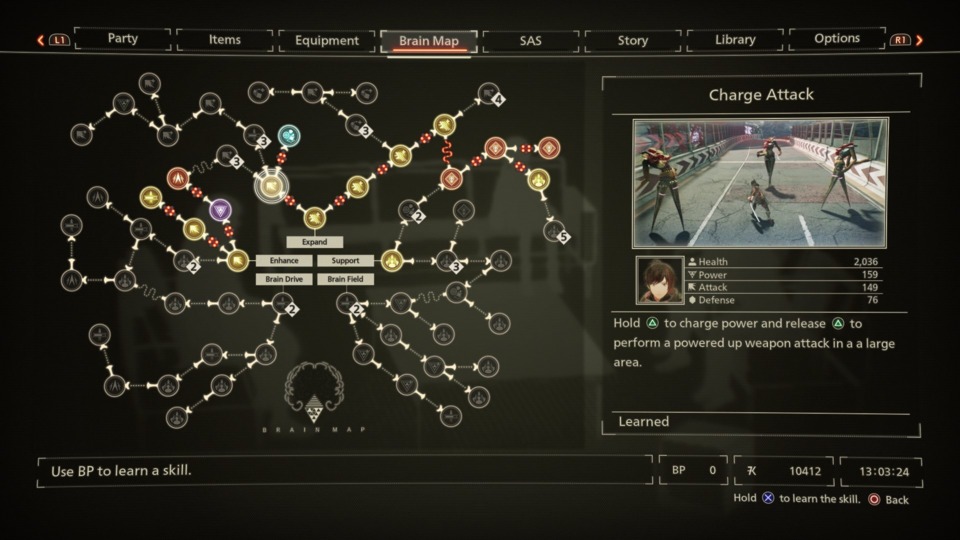
Some things I think I can blame on the game itself include the limitations of its lock-on system. Many enemies, especially larger ones, have something similar to Monster Hunter's topical vulnerabilities: that is, one part of their body in particular must be targeted to do any real damage. However, the lock-on doesn't allow you to target specific parts - its utility seems limited to keeping that enemy centered on the screen at all times - so it can be tricky to hit those areas with certain, looser attacks. The protagonist's psychokinesis, for instance, will do its best to aim for weak points but can easily be blocked depending on the direction the object is flying in from - given you can't exactly stop the battle and carefully select which piece of rubble to pick up and toss at high velocity, it's a bit of a crapshoot. The other major issue I'm running into is how little feedback there is regarding attacks on the player character. Some are obvious enough - a large haymaker that sends you flying should be enough visual feedback for anyone - but weaker attacks barely register visually and the next thing you know you're getting the low HP warning siren, perhaps too late to do something about it. Exacerbating this is how there's very little knockback to most enemy attacks, which in some ways is good if it means your own attacks aren't being interrupted every other moment but adds to the ambiguity of your current status. Unless you're constantly glancing down at the health bars of you and your active party, drawing attention away from where it's needed most (an enemy charging up an attack, for instance), it's easy to find yourself overwhelmed and defeated out of nowhere. Add to all that the chaotic nature of most fights where targeting one foe usually means there are enemies off-screen doing god-knows-what and it's a tricky game to parse in the moment. I'd like to think my situational awareness and ability to mentally find an oasis in a storm has been tempered by many real-time action games of this type over the years, but those skillsets have been challenged more than ever here.
I will say that the combat system is exceptionally strong when it comes to nuance and variability, the essence of which are frequently lacking from JRPGs that all too often allow the player to fall back on reliable strategies for every encounter. Boss fights in particular have been clobbering me fairly regularly, but then I'd eventually glean the strategy the game wanted me to use and found them much more palatable: the regular encounters, I'd then understand retroactively, were meant to help me understand and experiment with the many approaches I could take in order to instruct me on the specific tactics needed for the game's pivotal battles. There's still frustration here and there - one fight had you taking down an opponent that liked to attach itself to the ceiling and send ground-based homing projectiles at you, the latter you couldn't see coming because the camera was pointing straight up at the boss - but it has been satisfying to struggle my way through all these fights and learn the game's myriad systems in a "baptism of fire," adapt-or-die fashion. The occasional battles with human opponents have been the toughest since everyone moves so quickly and can hit harder than most.
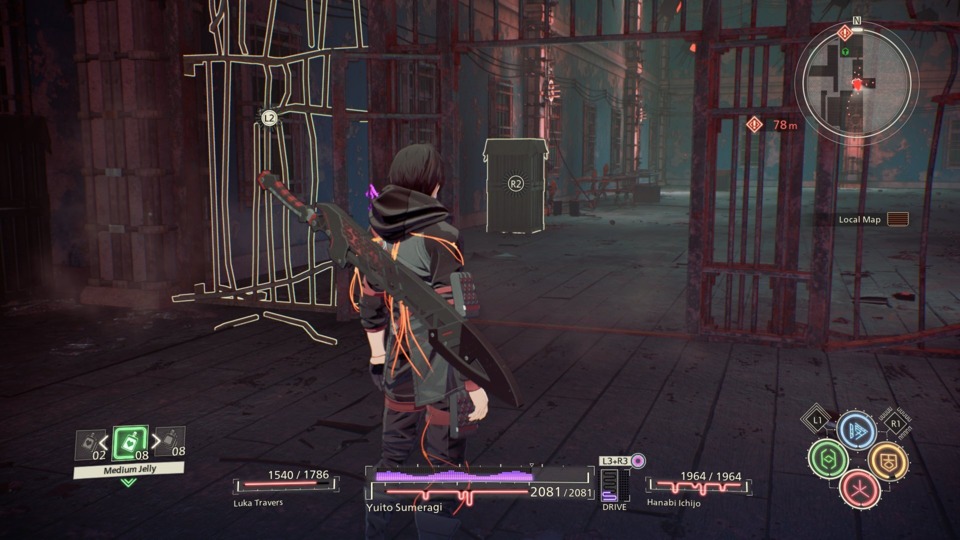
Outside of the hot-and-cold combat, I'm enjoying the game's setting and story quite a bit. I won't argue that it's anime as hell - this is Bamco we're talking about, and after almost a dozen Tales games I'm mostly inured to the anime clichés - but the designs of the Others are suitably disquieting, we've had plenty of surprising deaths and betrayals so far, and the party's "bond episodes" have been delightful. I particularly like familiar touches such as having a hideout HQ that slowly fills with furniture and decorations after you gift them to your companions for extra affinity points - it's a feature I've liked in many other games, including The Outer Worlds, Bully, the Personas, and so on. The way the game breaks up its narrative between mission and standby modes - the latter is when you can spend time watching bond episodes or completing side-quests, which usually involve going back to earlier areas - makes it more convenient for when you've only got the time for a shorter session.
It's fair to say I'm invested in seeing Scarlet Nexus through to its end, and I'm anticipating that the second time through with the alternative protagonist (I went with Yuito, the dude, first) will be much smoother sailing especially with the NG+ carry-overs. I also hope it cements my few reservations as being genuine issues with the game rather than relating to my own inexperience or lack of skill: there's always that worrisome concept that I'm simply not picking up on something obvious, like how livestreamers will occasionally miss vital parts of the UI or a tutorial because their attention is split seven ways and end up giving their viewers conniptions in the process. A tentative thumb wiggling towards the upwards position is how I'd currently rate the game, with an aspiration for it be a little more firm in the near future. (The thumb, I mean.)
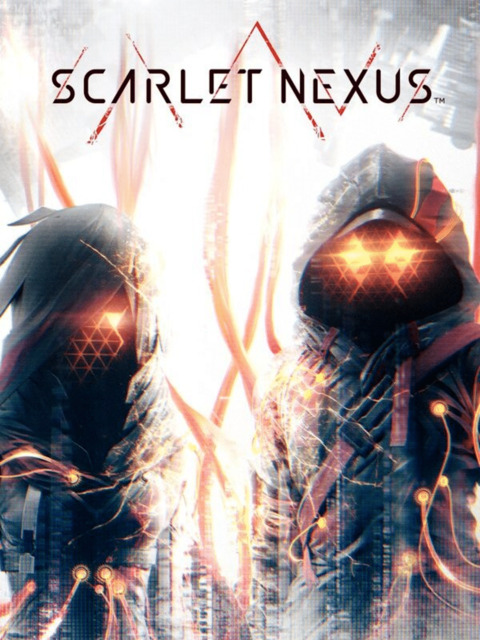
Log in to comment